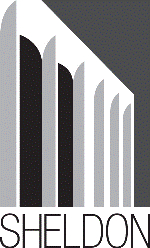Fine and Performing Arts, Hixson-Lied College of

Sheldon Museum of Art: Catalogs and Publications
Date of this Version
1977
Citation
This exhibition is part of the Statewide Traveling Exhibition Program organized by the Sheldon Memorial Art Gallery, University of Nebraska-Lincoln, with the support of the Nebraska Arts Council, the Nebraska Library Commission, the Nebraska Art Association and the local sponsors, (1976-77).
Abstract
People do not appear in these photographs by Wright Morris, but they can be seen in the structures they built for living, working and worshiping, in the personal furnishings they collected to comfort their lives, in the pattern of their comings and goings marked by streets and sidewalks.
"It is my feeling that the absence of people in these photographs enhances their presence in the objects-the structures, the artifacts, even the landscape suggests its appropriate inhabitant."*
These vestiges of their existence tell more about the inhabitants than portrait photographs could. The artifacts in Eddie Cahow's Barbershop define Eddie Cahow and the scene Through the Lace Curtain identifies the mistress of the Home Place near Norfolk.
"These are not documents of social relevance: they are portraits of what still persists after social relevance is forgotten."*
Man has left his mark on the landscape with large buildings like houses and churches and with smaller objects like mailboxes, wooden hammocks and public benches. The particular quality of his life is in the weathered wood of Abandoned Farmhouse with Drifted Snow and Church on Rise, in the old stone of Marble Facade of Bank and Tombstone; the character of Beaver Crossing is in View of Main Street and that of sururban Cleveland in Sidewalk with Grass. Mr. Morris says that he was seeking the old things, not from some sentimental nostalgia, but simply because he found them more interesting.
"It was their pastness that I wanted to salvage. Increasingly the present seems to be that time in which we liquidate the visible past. A less ephemeral one exists within us, and it tirelessly seeks for its likeness. Some will find small shocks of recognition in these photographs."*
It was these aged structures and artifacts through which Wright Morris reestablished old lines of communications with Nebraska. He was born in Central City, Nebraska, in 1910 and lived in the state for fifteen years, but, as he said, he knew little about his past. Morris had been writing and photographing across the United States when he stopped for several days in Chapman. Later visits developed into a book of writings and photographs titled The Home Place. A group of these pictures is included in this exhibition along with a large number of others from Nebraska.
In the course of his career he has produced three additional photo-text books, The Inhabitants, God's Country and My People and Love Affair: A Venetian Journal. The last one represents a departure in that the pictures were color snapshots taken, as any tourist might, for his own fireside reminiscence. He found the color dazzling at first, but eventually wearing. He says this is because color makes everything seem important when it is not, and this is probably why serious artist-photographers prefer black and white.

